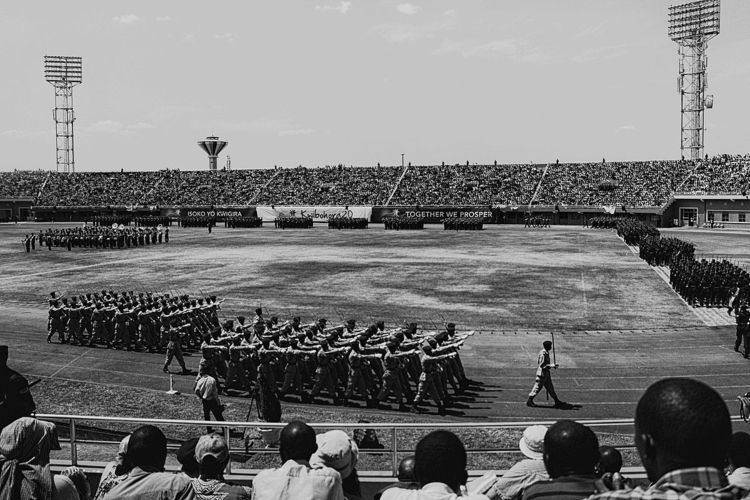Full name Amahoro Stadium Surface Grass Capacity 30,000 | Opened 1986 | |
 | ||
Built Habyarimana Juvenal government Teams Rayon Sports F.C., Rwanda national football team, Armée Patriotique Rwandaise F.C., S.C. Kiyovu Sports Similar Stade Régional Nyamirambo, Umuganda Stadium, Kigali Genocide Memorial, Stade Huye, Hôtel des Mille Collines | ||
Diamond platnumz live performance amahoro stadium rwanda 1 1 2015
The Amahoro Stadium (Kinyarwanda: Stade Amahoro; French: Stade Amahoro; Kinyarwanda for "Peace Stadium"), also known as Amahoro National Stadium, is a multi-purpose stadium in the Gasabo district of Kigali, Rwanda. With a capacity of 30,000, it is the largest stadium in Rwanda and hosts football matches, concerts, and public events. The football clubs Armée Patriotique Rwandaise F.C. and Rayon Sports F.C. are the tenants. The venue is also sometimes used for rugby union.
Contents
- Diamond platnumz live performance amahoro stadium rwanda 1 1 2015
- 19 april 1994 shelling of amahoro stadium 100 stories kwibuka
- History
- References
During the Rwandan Genocide in 1994, it was temporarily a "UN Protected Site" hosting to up to 12,000 mainly Tutsis refugees.
19 april 1994 shelling of amahoro stadium 100 stories kwibuka
History
The stadium was constructed by the China Civil Engineering Construction Corporation, at a cost of US$ 21 million. Construction began in March 1984, and was completed in January 1989.
In 1990, the Rwandan Civil War broke out between the Rwandan Patriotic Front (RPF), a Tutsi rebel group, and President Juvenal Habyrarimana's government forces. The war ended in 1993 with a cease-fire and the signing of the Arusha Accords, which gave the RPF positions in a Broad-Based Transitional Government (BBTG) and the national army, and also provided for a United Nations peacekeeping force. This force was known as the United Nations Assistance Mission for Rwanda (UNAMIR), and was headed by Canadian general Roméo Dallaire. UNAMIR's initial headquarters was in the Hotel des Mille Collines, but the upmarket hotel did not welcome the presence of soldiers, and Dallaire quickly sought an alternative location; after some days of searching, UNAMIR chose the Amahoro Stadium, which was large enough to host an entire battalion of soldiers. The headquarters was opened on 17 November 1993, with an official ceremony attended by Dallaire and President Habyarimana.
The cease-fire ended abruptly on 6 April 1994 when Habyarimana's plane was shot down and he was killed; the assassination served as the catalyst for the Rwandan Genocide, which began within a few hours. The interim government began killing Tutsi and politically moderate Hutu, in well-planned attacks across the country. Tutsi civilians began seeking refuge in United Nations premises, and thousands of refugees gathered inside the Amahoro Stadium.
